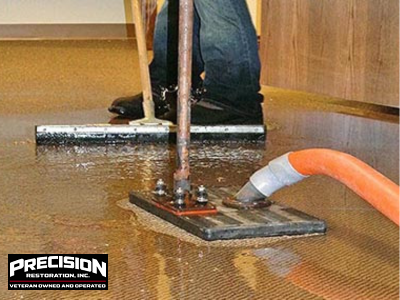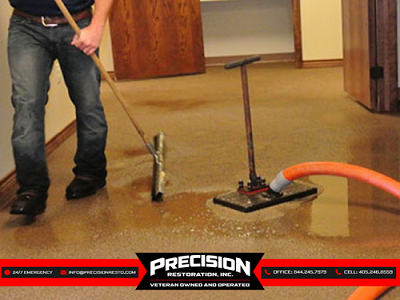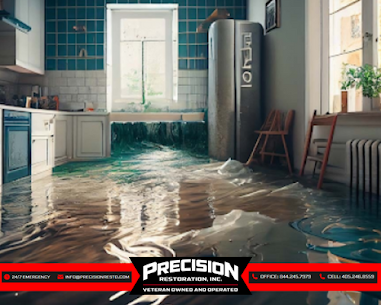Water damage can be a homeowner’s worst nightmare, especially when it comes to hardwood floors. These beautiful, natural materials are prized for their durability and aesthetic appeal, but they can be particularly vulnerable to water damage. Whether it’s from a burst pipe, flooding, or a leaky roof, water damage can cause warping, staining, and even structural damage to your hardwood floors. This guide will walk you through the essential steps of water damage restoration for hardwood floors, helping you understand how to tackle the issue effectively and prevent future problems.
Understanding the Impact of Water Damage
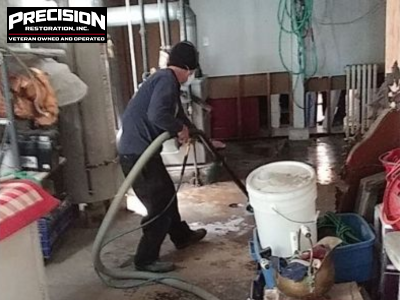
Before diving into the restoration process, it’s crucial to understand how water affects hardwood floors. Wood is a hygroscopic material, meaning it absorbs moisture from its environment. When hardwood floors come into contact with water, they can swell, buckle, and become discolored. The extent of the damage depends on several factors:
- Duration of Exposure: The longer the water sits, the more damage it can cause. Quick action is key.
- Type of Water: Clean water from a broken pipe is less damaging than contaminated water from a sewage backup.
- Wood Type and Finish: Different wood species and finishes react differently to water. Some woods are more porous and absorb moisture more quickly.
Immediate Actions to Take
When you discover water damage, taking immediate action is crucial to minimize the extent of the damage. Here’s what you should do:
Stop the Water Source
The first step is to stop the source of the water. If it’s a burst pipe, turn off the main water supply. For leaks, identify and repair the source of the leak. This prevents further water from causing additional damage.
Remove Standing Water
Use a wet vacuum or a mop to remove as much standing water as possible. The faster you remove the water, the less damage will occur. For large amounts of water, consider renting commercial-grade equipment or hiring a professional water damage restoration service.
Dry the Area
Once the standing water is removed, start the drying process. Use fans and dehumidifiers to circulate air and remove moisture from the room. Ensure that you have adequate ventilation to facilitate the drying process. Dehumidifiers are especially important as they help reduce the humidity levels in the room, which accelerates drying.
Protect the Area
If the water damage is severe, consider moving furniture and other belongings out of the affected area. This prevents additional damage and allows for a more thorough cleaning and restoration process.
Assessing the Damage
Once the area is dry, it’s time to assess the damage to your hardwood floors. Look for signs such as:
- Buckling or Warping: The edges of the boards may lift or curve.
- Cupping: The edges of the boards become higher than the center.
- Crowns: The center of the boards is raised, causing a concave appearance.
- Staining: Dark or discolored patches where the water has penetrated.
Effective Strategies for Water Damage Restoration
Effective strategies for water damage restoration involve swift and systematic action to minimize damage and restore affected areas. Start by addressing the source of the water, whether it’s a burst pipe or a leaky roof, to prevent further damage. Once the water source is controlled, remove standing water using a wet vacuum or mop, and then thoroughly dry the area with fans and dehumidifiers. This helps to reduce humidity and prevent mold growth, which can exacerbate the damage.
After the immediate threats are managed, assess the damage to materials such as hardwood floors, drywall, and insulation. Cleaning, sanding, and refinishing may be necessary for affected surfaces, while severely damaged items may need replacement. Professional restoration services can provide expertise and equipment for more extensive damage, ensuring a comprehensive recovery process.
Essential Tips for Restoring Water-Damaged Hardwood Floors
Restoring water-damaged hardwood floors requires prompt action to minimize long-term damage. Begin by addressing the source of the water and removing any standing water with a wet vacuum or mop. Once the area is dry, use fans and dehumidifiers to ensure thorough moisture removal. Inspect the floors for signs of warping, buckling, or discoloration. Minor issues can often be resolved with sanding and refinishing, but extensive damage may necessitate replacing individual boards.
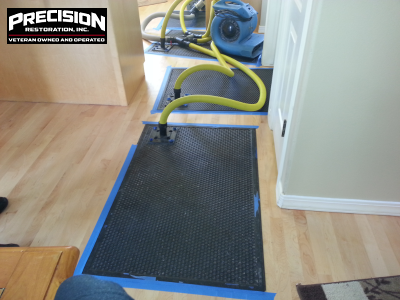
After addressing the immediate damage, focus on preventing future issues. Maintain proper humidity levels in your home to avoid further wood expansion or contraction. Regularly inspect your floors and address any leaks or water sources promptly. If the damage is severe or you’re uncertain about the repair process, consulting a professional restoration service can ensure effective and lasting results.
The Complete Guide to Water Damage Restoration Techniques
Water damage restoration involves several key techniques to effectively address and repair affected areas. Start by identifying and stopping the source of water to prevent additional damage. Remove standing water using a wet vacuum, and then thoroughly dry the area with fans and dehumidifiers to mitigate mold growth and structural issues. Clean and sanitize the affected surfaces to eliminate contaminants and prevent future problems.
Next, assess the extent of the damage. For hardwood floors, sanding and refinishing may be necessary to address minor warping or discoloration, while severely damaged boards may need replacement. Repair or replace other affected materials like drywall and insulation as needed. For extensive damage or complex situations, enlisting professional restoration services ensures a thorough and effective recovery process.
Conclusion
Addressing water damage to hardwood floors promptly and effectively is crucial to preserving the integrity and appearance of your flooring. With the right approach, including thorough drying and expert repair techniques, you can prevent further damage and maintain the beauty and functionality of your hardwood floors. Precision Restoration, Inc. is dedicated to providing top-notch water damage restoration services in Oklahoma City, ensuring your home is restored to its optimal condition.
For those facing water damage challenges, trust Precision Restoration, Inc. to deliver reliable and professional solutions tailored to your specific needs. Our experienced team is committed to excellence and customer satisfaction, making us your go-to experts for hardwood floor restoration. Reach out today to learn more about how we can assist with your restoration needs.

